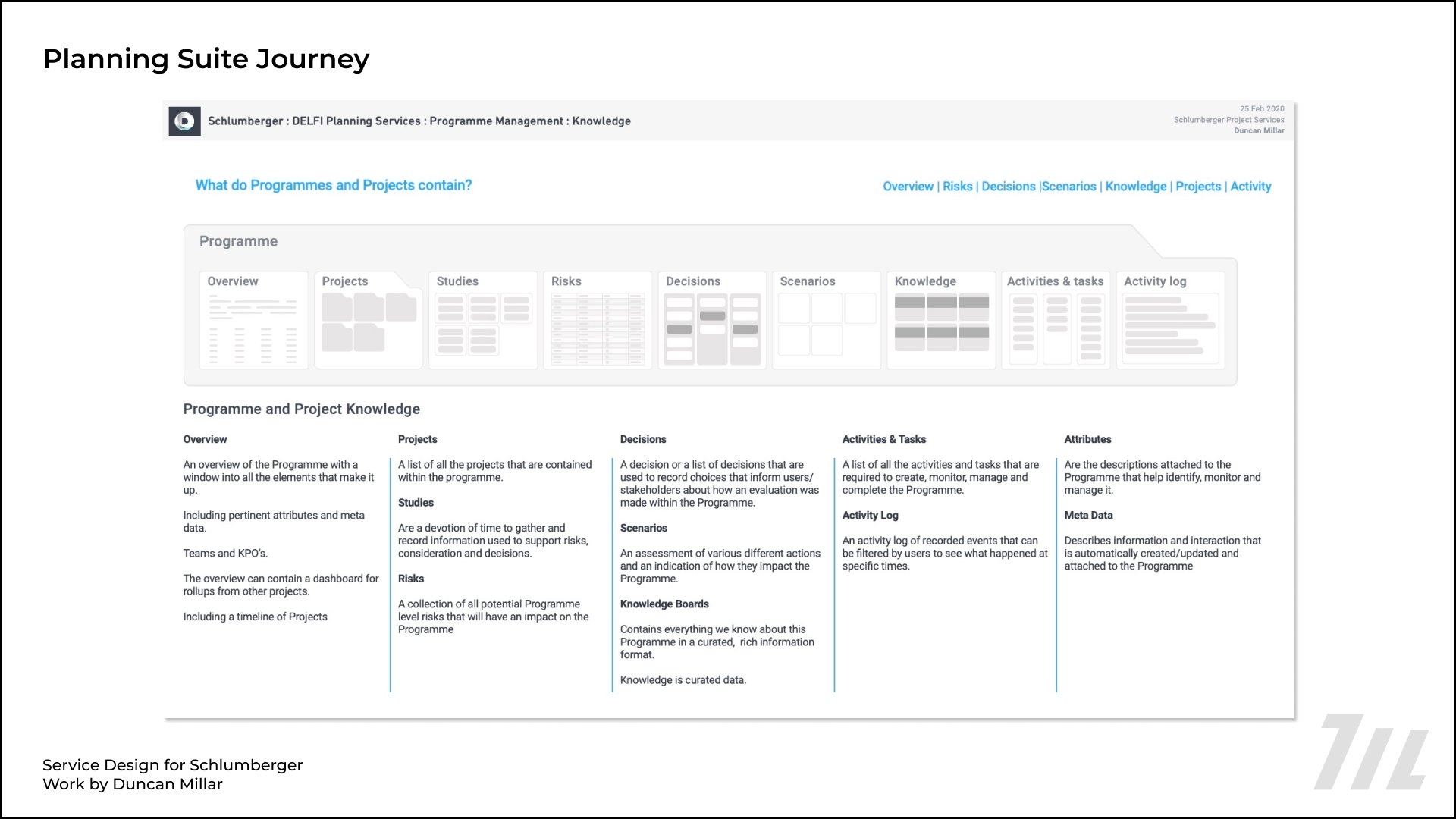Exploration planning in the oil and gas industry
(how we looked for oil in data)
Schlumberger is the world's largest oilfield services company and I partnered with them to lead stakeholders through a discovery process that generated the personas and scenarios that we used to develop a prototype to test with the team.
The prototype was well received and it was pushed into further development, eventually becoming the piece of software that we know today known as ExplorePlan.
“I had the pleasure to work with Duncan during the first phase of the development of a new product in our portfolio. I was really impressed by his ability to get a thorough and deep understanding in a completely new domain for him in a short amount of time.
Within less than 3 months, he was able to exactly identify the pain points in the way geologists work in oil and gas exploration. He did that by actively listening and asking the right questions at the right time.
Duncan has the ability to perfectly balance rigorous work with a fit for purpose solution. For our specific product, he came up with a great and simple design concept, which was exactly what we needed.
Most importantly, Duncan is just a very kind easy-going person, while being insistent when needed.”
Sofie Nollet, Digital Integration Mgr. @ Schlumberger
Putting pen to paper is an important part of my design process
Researching
“Duncan has demonstrated not only his design skills but also his expertise in the domain (oil drilling and geology), which is unique.” —Stefan Sakowicz, Digital Services Director @ Kainos
Like learning a new language, when faced with a new domain, I take a full immersion approach. For this project, that took the form of spending weeks in user interviews, observational studies, reading in depth books on the topic, and sitting with developers. I absorb absorb absorb.
These slides are mechanisms for me to understand and communicate my understanding in order to receive feedback on whether I was on the right track.
Planning
When starting to create a product, we build the spaces that the product will fit into. We build buckets in order to organize the flow of people through information. Information doesn’t change location, the flow of people is what changes. We’re joining those information locations together in a progressive order that makes sense in the mind of the user.
The user defines their own path through information and we make sure the actual pathways match their own internalized logic.
Prototyping
Once we’ve formed a logical path, we must build a system that works in that way. The idea of prototyping is to test our assumptions with users.
In the world of geology, you will find 100 different geologists with 100 different methods for oil discovery. Some will tell you it’s magic, some will tell you it’s science. They have very strong opinions so gaining consensus for a method that makes sense to them all is like striking oil.






















